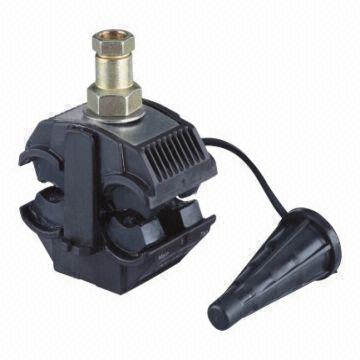
An insulated piercing clamp (IPC) is a specialized device used in transmission lines to create tap connections. It allows for the connection of a branch line to main line without needing to strip the insulation from the main line conductors. Use of the connectors makes installation faster, safer and reliable. This is as compared to traditional methods involving stripping and splicing. The insulated piercing clamp places around the main line conductor and the branch line conductor. They are from UV-resistant thermoplastic with tinned copper inserts for strength and conductivity. IPCs work with steel bolts and nuts for tightening. The specific design and materials used vary depending on the application. They find use in applications such as electrical installations, telecommunications and street lighting.
Functions of insulated piercing clamp
The function of the insulated piercing clamp is to create tap connections for branch lines to a main line. This is without stripping or splicing the insulation from the main line conductors. They play a crucial role in electrical work by ensuring safe, efficient and reliable electrical connections. The following are the functions of insulated piercing clamp in overhead transmission lines.
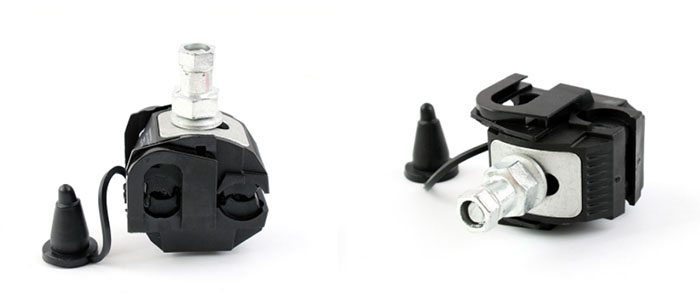
- Insulation – insulated piercing clamps enable electrical connections without damaging the insulation of wires. This prevents exposure to bare conductors and reducing the risk of short circuits.
- Versatility – the clamps have designs to accommodate various wire sizes and types. This is including stranded and solid conductors on overhead transmission lines. This allows them to work in a wide range of electrical application.
- Temporary connections – the connectors alsowork in temporary electrical connections. These includes during testing or troubleshooting. This is to allow for quick and easy connections without the need for permanent alterations to the wiring.
- Electrical connection – this is the main function of the clamp. It establishes a secure electrical connection between wires without need to strip insulation.
- Safety – the clamps feature insulated handles which provide protection against electric shocks.
- Reliability – they also create a secure and reliable electrical connection. This is to ensure good conductivity and maintain continuity in electrical circuits.
Components of insulated piercing connectors
The components of the IPC work together to create a safe and reliable connection between conductors. Choose the right type and size of IPC for your specific application. This is to ensure optimal performance and safety. The following are the common components of insulated piercing clamps.
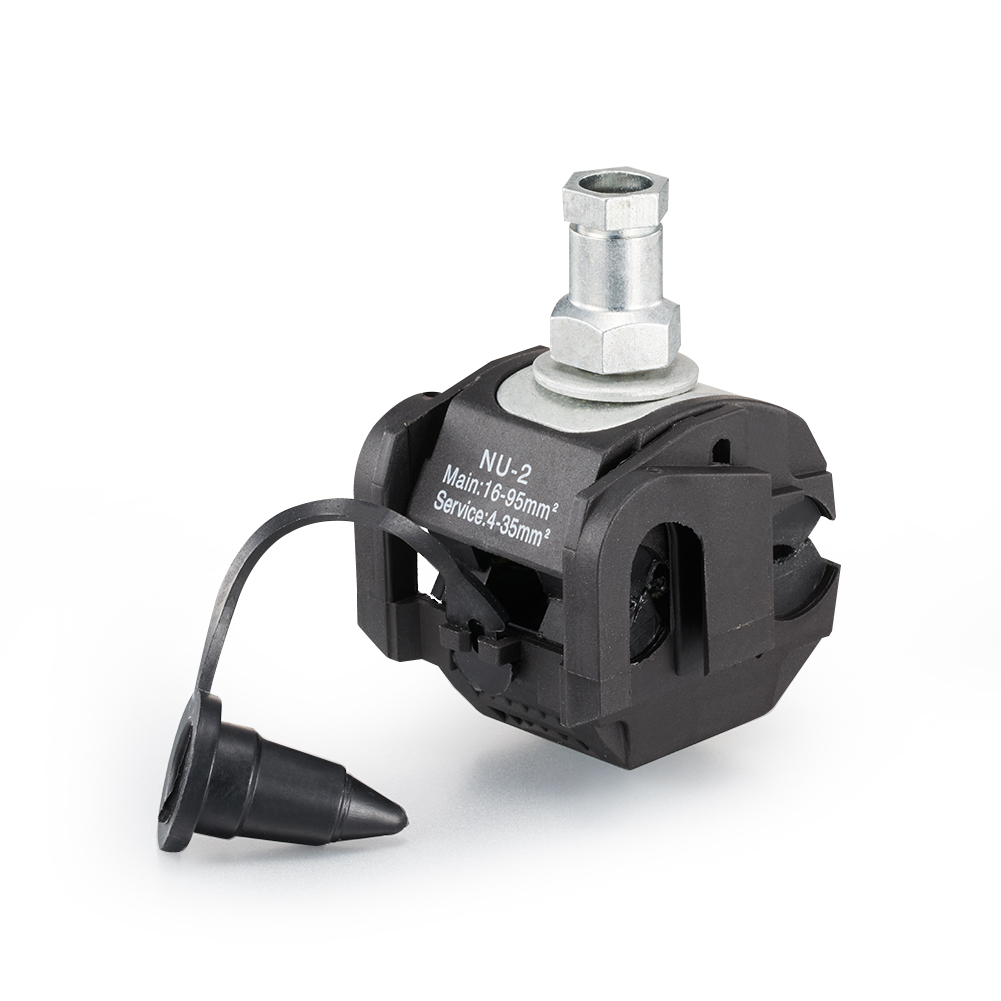
- Housing – this is the outer shell of the clamp made from UV resistant thermoplastic for durability and insulation. It houses all the other components and prevents current from flowing through the clamp.
- Piercing teeth – these are sharp, spring-loaded teeth made from conductive material line tinned copper. They are responsible for piercing the insulation of the conductor and making the bare metal underneath.
- Conductor ports – these are opening in the housing that allows the conductors to insert into the clamp. They have designs for specific conductor sizes and types.
- Tightening mechanism – this applies pressure to the piercing teeth forcing them through the insulation.
- Insulating gel – the housing of the clamp has insulating gel inside for extra moisture resistance and protection.
Application areas of insulated piercing clamps
Insulated piercing clamps offer a versatile and non-destructive method for tapping into power lines. They allow for easy installation and modification of electrical connections. Insulated piercing clamps provide a flexibility in expanding power distribution systems. They enable the integration of extra circuits, equipment and monitoring devices. Discussed below are the various applications of the insulated piercing clamps.
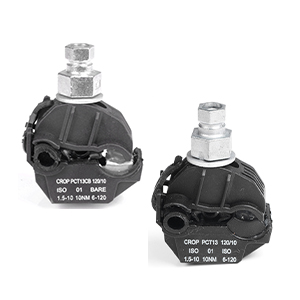
- Street lighting – street lighting systems connect to power lines using insulated piercing clamps. The clamps provide a secure connection point for the street lighting circuits. This is to allow for efficient and reliable illumination.
- Secondary line installations – the clamps tap into existing power lines and create connection points for secondary lines. Secondary lines work for distributing power to extra buildings, installations or equipment.
- Temporary installations – insulated piercing clamps create temporary connections to power sources. These include setting up power supply for outdoor events, construction sites or temporary connections to power sources.
- Metering and monitoring – the clamps install electrical meters and monitoring devices onto power lines. The clamps allow for accurate measurement of power monitoring of electrical parameters. These is like voltage, current and power quality.
- Communication and signaling – Insulated piercing clamps can tap into power lines for the installation of communication and signaling equipment. They include devices like telecommunication lines, data transmission equipment and traffic signal systems.
- Fault detection and repair – the clamps are sometimes used in fault detection and repair processes. This is by tapping into power lines at specific points.
Types of insulated piercing connectors
Designs of the clamps vary depending on the type of power line, voltage levels, installation requirements and local regulations. Consult with qualified electrical professionals to ensure proper selection and installation. The following are the common types of the insulated piercing clamps.
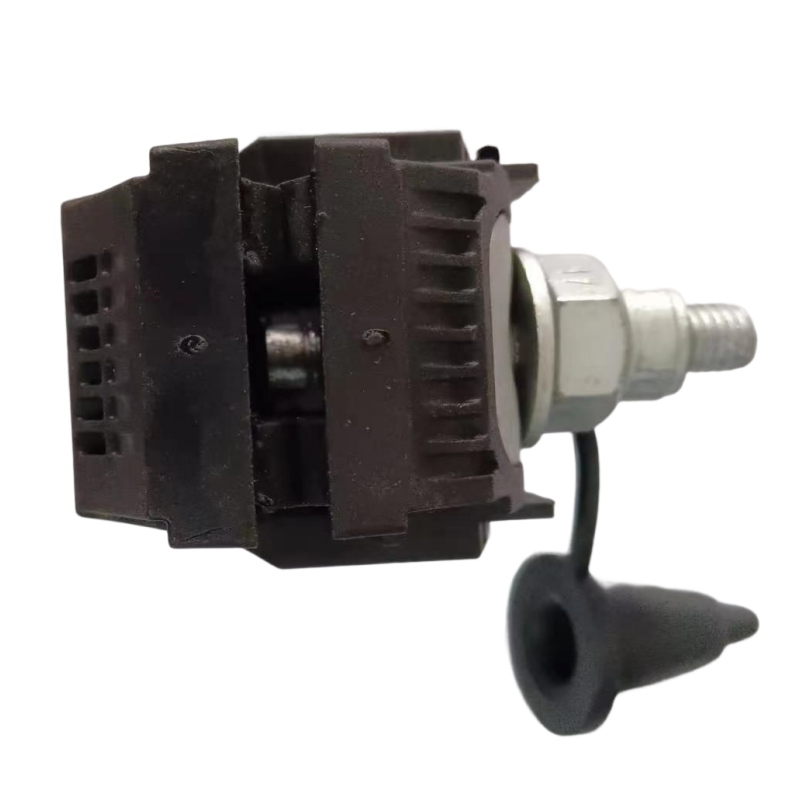
- Bolted insulated piercing clamp – these are the most used clamps which feature a housing with a bolt and nut mechanism for tightening. They offer a wide range of conductor compatibility and are suitable for both low and medium voltage applications.
- Compression insulated clamps – these clamps use hydraulic tool to apply pressure and compress the clamp piercing the insulation. They also provide a more uniform and consistent connection compared to bolted clamps.
- Wedge based IPCs – these types of clamps use a wedge mechanism to drive the piercing teeth through the insulation. They are compact and lightweight which makes them ideal for space constrained applications.
- Shear-bolt IPCs – these feature a bolt that breaks off after reaching a specific torque. This is to ensure proper tightening and tamper resistance.
- Service Drop piercing clamp – the clamps have designs to tap into underground power cables. They also pierce the insulation of the cable while maintaining a secure and reliable electrical connection.
- Insulated piercing tap connector – these connectors tap into existing electrical lines to provide a connection for extra circuits. They work in telecommunications and distribution applications.
- Insulated piercing ground clamp – ground clamps create grounding connections in electrical systems. They also allow for secure grounding connections without the need for stripping insulation from grounding conductors.
- Underground line piercing clamp – these clamps pierce the insulation of the cable while maintaining a secure and reliable electrical connection.
Challenges and issues facing insulated piercing clamps
As much as the pierced insulated clamps provide many advantages to electrical work, there are also some down sides in using the devices. These kinds of clamps have certain drawbacks that need addressing. These difficulties need to be really thought, planned and adhered to for safety and following best practices. This is to ensure a smooth installation and performance of the clamp. Some of the common challenges are as discussed below.
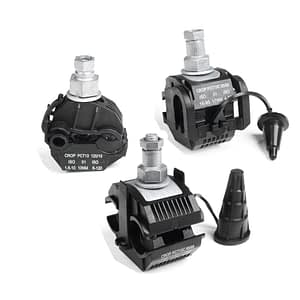
- Compatibility – piercing clamps with insulated shanks should match with the wire type, insulation labels and sizes used for that purpose. Making sure all the wires are compatible turns out to be helpful in the long run.
- Installation – a good installation of corner cord connection cells is critical for dependable connectivity. The safety is also an important question. Even though placing the clamps may not be difficult, the ability to do it might need some expertise.
- Environmental Factors – this leads to an exposure of insulated piercing clamps which are commonly used outside the premises to those hazards. These factors include moisture, UV radiation, temperature fluctuations and corrosive substances. The factors may influence the task of preserving them may need supplementary measures.
- Maintenance – checking and cleaning of the insulated clamps is necessary. This is because it keeps the clamps in the best condition as well on make it safe to use. The technician may have to do that by cleaning, fastening the loose elements or replace worn parts. The maintenance problem could be the most major one in situations where it is difficult to get many clamps in contact with a huge number of clamps.
- Overcoming Insulation Resistance – the clamps may take part in difficulties of being able to penetrate potential insulation materials. It can thus tamper with the link quality and integrity depending on an impeded scenario.
- Interference with Existing Installations – working with clamps that have insulation wrapped around them can mean difficulties during installation. The need for effective settling of playoffs may involve situations where two systems need access by one ladder.
Frequently asked questions
The clamps create tap connections for branch lines on overhead transmission lines without stripping insulation. It connects service drop to distribution lines.
The IPC offer faster and safer installations due to no insulation stripping. They also provide reliable connections resistant to vibration and corrosion. They help reduce maintenance due to sealed and weatherproof design.